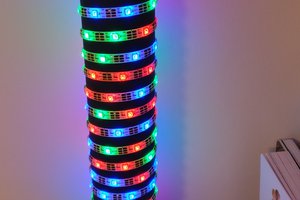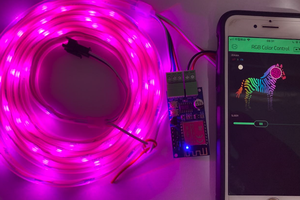Node.js Application
- Socket.io and Express and are used to support the web interface functionality
- The code for web interface connectivity, LED manipulation, and the HTTP server providing web client files is located in the server.js file
- Web client files are served from the /public folder
GitHub Repository
Name: tps-gpio-tutorials
Repository page: https://github.com/tibbotech/tps-gpio-tutorials
Clone URL: https://github.com/tibbotech/tps-gpio-tutorials.git
Updated At: Mon Oct 10 2016
 Dmitry Slepov
Dmitry Slepov

 Futience
Futience
 Jose Maria Rodriguez Saez
Jose Maria Rodriguez Saez
 IOTMCU
IOTMCU
 HYuiii
HYuiii